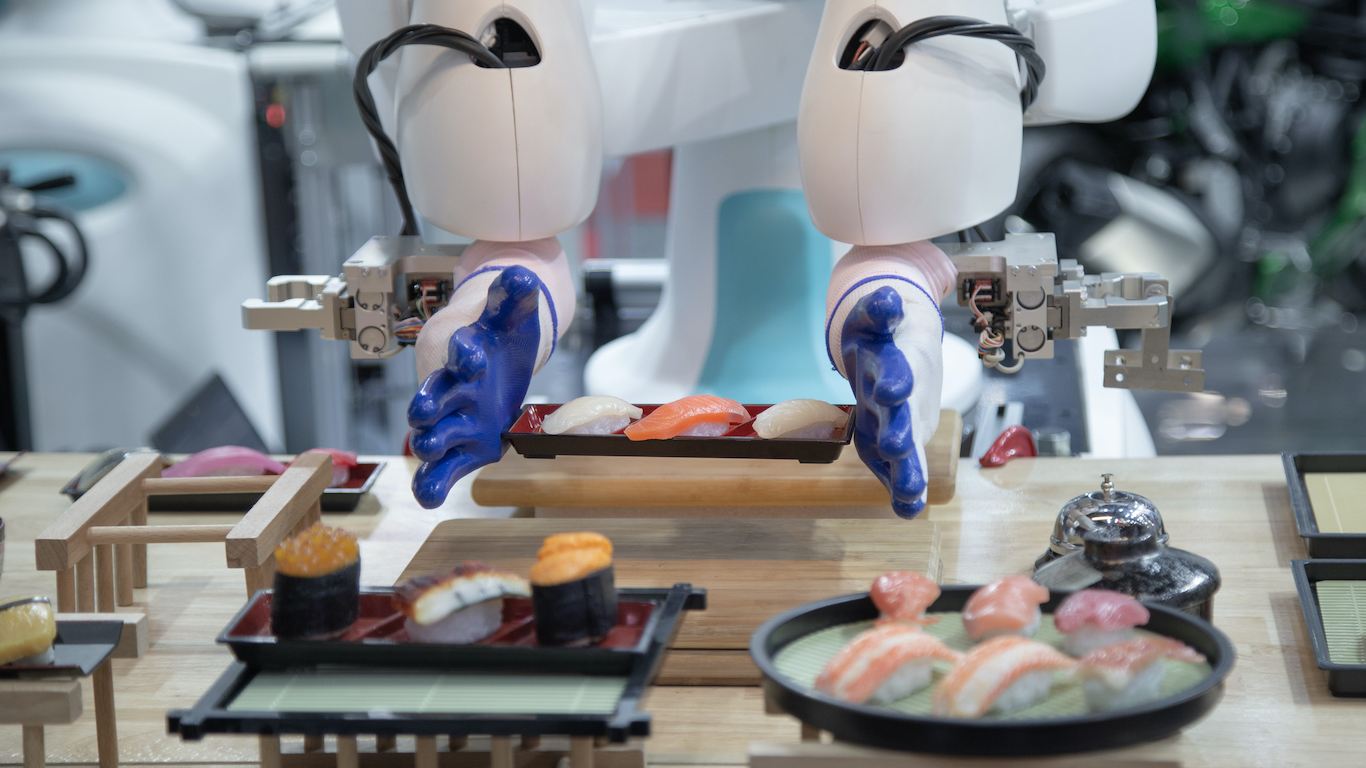
Since the beginning of the Great Recession in 2009, the number of manufacturing jobs in the United States has actually increased slightly from 12.561 million to 12.811 million this past October, according to data from the U.S. Bureau of Labor Statistics. Manufacturing jobs reached a low of 11.453 million in March of 2010. When President Obama left office, there were 12.368 million U.S. manufacturing jobs.
Between 2009 and 2017, according to a recent study by The Century Foundation, the use of robots in U.S. manufacturing industries more than doubled. Steady and significant job growth along with a strong economic recovery certainly drove the increase in manufacturing jobs and contributed to the increase in the use of robots.
As William M. Rodgers III and Richard Freeman say in the report, “[T]he economic boom of the past decade has effectively “masked” some of the impacts that robots have had on workers. It’s not that robots weren’t displacing jobs—it’s that the overall economic expansion was large enough to offset some of these job losses.”
Such a period of growth cannot go on forever. The use of robots (commonly called robot intensity) in manufacturing more than doubled from 0.813 per thousand workers in 2009 to 1.974 per thousand workers in 2017. Robot intensity is much lower in states with high rates of union membership.
The study also noted that robot intensity has had a positive effect on the employment gains of young, less-educated men and less-educated adult women but no impact on young, less-educated women and less-educated adult men. When looking at earnings growth, robot intensity has had a positive effect on young, less-educated women and less-educated minority men and women but no significant impact on less-educated adult men and women.
The authors conclude: “[A]t the current stage and pace of robot growth, and with the right economic conditions in place, some workers without a college degree may benefit from robotization. This is perhaps due to robots stimulating demand for goods, creating new markets, and spurring wage growth.”
We recently wrote about 15 cities where artificial intelligence (AI) is likely to be a job-killer. Americans with bachelor’s degrees face five times more risk of losing their jobs to AI than do those with a high-school diploma. Holders of a graduate or professional degree face three times greater risk.
The distinction between robots and AI is critical to determining which types of workers face the greater risk of being replaced. Robots generally perform high-volume, specific and repetitive tasks, while AI generally refers to a machine that can learn, think and act independently, once it has been fed massive amounts of data.
Robot intensity is highest in the U.S. Census Bureau’s East North Central region that years ago became widely known as the Rust Belt (Michigan, Ohio, Indiana, Illinois and Wisconsin). Between 2009 and 2017, robot intensity in this region rose from 1.730 per thousand workers to 3.169 per thousand. Of the 10 cities with the highest robot intensities, half are located in one of these states. Only two of the top 10 are among the 15 cities where exposure to AI job losses is greatest.
An interactive map that illustrates robot intensity by county in the lower 48 states is available at The Century Foundation website.
Here are the 10 metro areas where robot intensity is greatest.
- Los Angeles-Long Beach-Santa Ana, California
> Robots per 1,000 workers: 6.91
> Number of workers for every robot: 135 - Chicago-Naperville-Joliet, Illinois
> Robots per 1,000 workers: 6.105
> Number of workers for every robot: 166 - Houston-Baytown-Sugar Land, Texas
> Robots per 1,000 workers: 3.375
> Number of workers for every robot: 296 - Phoenix-Mesa-Scottsdale, Arizona
> Robots per 1,000 workers: 2.163
> Number of workers for every robot: 462 - Detroit-Warren-Dearborn, Michigan
> Robots per 1,000 workers: 1.7
> Number of workers for every robot: 588 - Milwaukee-Waukesha-West Allis, Wisconsin
> Robots per 1,000 workers: 1.629
> Number of workers for every robot: 614 - Philadelphia-Camden-Wilmington, PA-NJ, DE-MD
> Robots per 1,000 workers: 1.505
> Number of workers for every robot: 664 - San Jose-Sunnyvale-Santa Clara, California
> Robots per 1,000 workers: 1.438
> Number of workers for every robot: 695 - Indianapolis, Indiana
> Robots per 1,000 workers: 1.434
> Number of workers for every robot: 697 - Cleveland-Elyria, Ohio
> Robots per 1,000 workers: 1.289
> Number of workers for every robot: 776
Thank you for reading! Have some feedback for us?
Contact the 24/7 Wall St. editorial team.

 24/7 Wall St.
24/7 Wall St.



